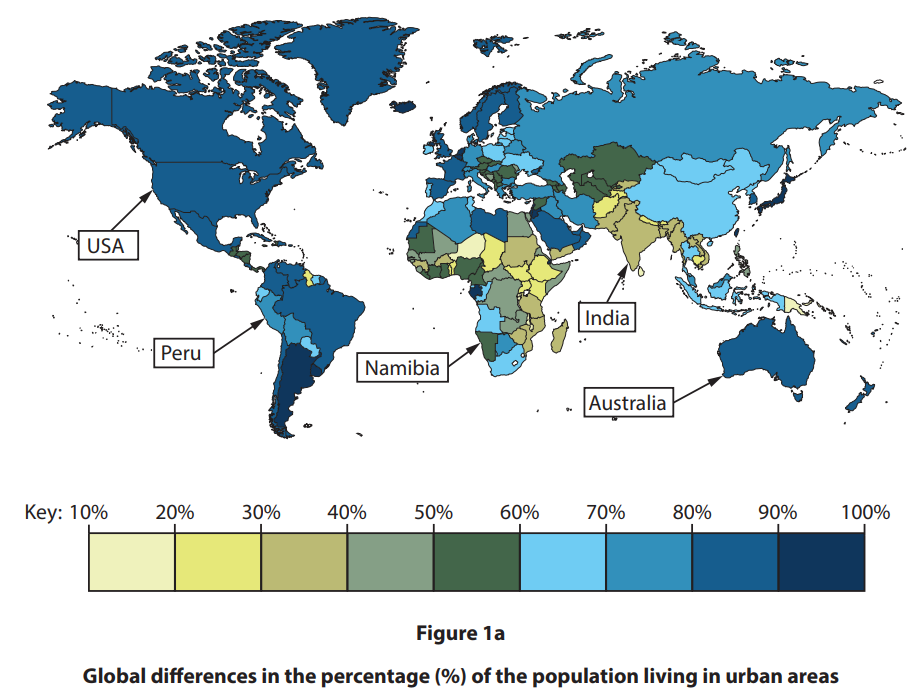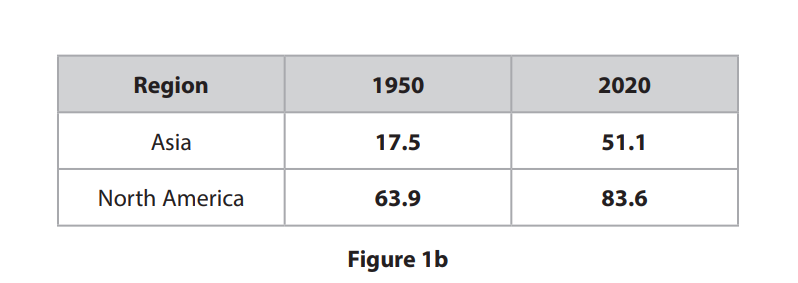
Study Figure 1a in the Resource Booklet.
Identify the country that had the largest increase in percentage urban population between 1970 and 1985?
Albania
Ecuador
Libya
Mongolia
Identify Mongolia’s percentage urban population in 2010.
51%
62%
69%
78%
State two possible reasons for the overall trend in urbanisation shown in Figure 1a.
Did this page help you?

